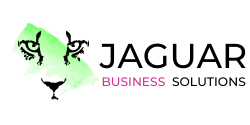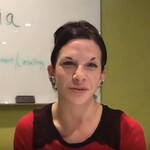From political turmoil to a global pandemic, our world has seen monumental pivotal changes in only a few short years. Not only has this impacted how our society functions, but also how we do business.
Unfortunately, not every organization could effectively and successfully pivot, adapt, and thrive through such pivotal and unprecedented changes. However, successful organizations shifted how they handled talent management and change. They shifted their focus from process to outcomes and have a solid structure, level of governance, and change management model, all of which are crucial elements to success.
It sounds easy, but the truth is it can be extremely difficult for organizations to keep up with the competition, society, politics, the economy, and all the other changes that the world throws at them.
One such initiative is Diversity, Equity, and Inclusion, or DEI. DEI has become a serious matter that many organizations must take seriously. However, not every organization understands where to begin to approach DEI, never mind implementing its initiatives. Many organizations throw the responsibility at HR, expecting them to develop policies and procedures to bring more organizational awareness to and improve DEI.
However, one tried, and true way to improve DEI in your organization is with a project management framework. In this article, we will dive into how organizations can leverage project management to prepare for conflict, change, and even improve their DEI programs.
What is a Project Management Framework?
Before we dive too deep, let’s first review what a project management framework is. According to the Project Management Institute (PMI), a project management framework is defined as “a project management framework is a set of standard project management processes, templates, and tools that can be used to initiate, plan, execute, control, and close a project.”
In short, a project management framework not only brings structure and order to chaos, but it provides a foundation—or building blocks—to ensure successful processes and outcomes and achieve change.
A project management framework and methodology are often confused and used interchangeably (and incorrectly). Here are the differences between the two:
- A project framework is a set of guidelines or roadmap to managing projects but also allows for some freedom.
- A project methodology is an approach with a clear set of rules, principles, methods, activities, and processes used to manage and execute a project or solve a specific problem. Methodologies are well-defined and repeatable. A system of practices, techniques, procedures, and rules used by those who work in a discipline.
When comparing the two, a methodology is what to do, when to do it, and how to get there, and a framework is the roadmap.
However, we’ve seen it all too often: Many organization members see and recognize the value in project management, whereas others, specifically some members of senior leadership and management and executives, do not.
Mark my words: Any project management framework or methodology will never survive in this type of environment. Methodologies must be accepted and followed by all—all— members of the organization.
So the first step in improving DEI? Adopting and implementing a project management framework. Why? Not only does a framework provide governance in the functions that require governance, but it also helps organizations achieve change.
3 Common Types of Project Management Frameworks
Organizations use different types of frameworks depending on their projects and initiatives. As we think about DEI initiatives, in particular, many of them include the following:
- Developing or changing policies and practices
- Creating and launching training programs
- Recruiting practices
- Hosting DEI awareness programs and events for employees
The truth is there are many different types of project management frameworks, especially as the project management discipline evolves and expands over the decades. In fact, there are too many frameworks to even list in this article.
However, here are some of the most common project management frameworks you can implement as soon as today:
1. Scrum
Even if they have never implemented it, most organizations have at least heard of Scrum. Scrum is an iterative approach to delivering a product or initiative. Although it is often used for product development projects, the Scrum framework is comprised of clear project team roles, events, artifacts, rules, and timeboxing. Scrum involves running weekly, biweekly, or monthly “sprints” where the project team works on developing a core component of the overall project.
How Scrum Can Help with DEI Initiatives
By leveraging the Scrum framework, DEI committees, project teams, and departments can work together to develop components of the particular DEI project or initiative, such as a process, policy, procedure, or training program. DEI committees and project teams can set up a weekly or biweekly “sprint” schedule to ensure that the DEI initiatives are moving forward.
2. Kanban
Many teams use the Kanban framework. Kanban is another iterative framework supported by lean thinking. It is also supported by a visualization tool, such as a Kanban board or visual workflow board. This framework allows for project and development team members to not only visually see the workflow but also all the activities, work quantities, and bottlenecks.
How Kanban Can Help with DEI Initiatives
The Kanban method is often used to ensure a continuous flow of work and to also visually represent that work to all DEI committee and project team members. Organizations can easily apply the Kanban method with virtually little to no disruption. In fact, Kanban is often described as the “start where you are” method, and it is best for teams that require a level of flexibility, continuous flow of work and delivery, increased productivity and quality, and focus, among others.
Kanban is often used for knowledge work, and it is best for newly-established DEI committees and project teams who need to assemble and get up and running quickly.
3. Waterfall
Waterfall is another incredibly common project management framework that most organizations have at least heard of to some degree. However, what does it mean in practice? Waterfall is a more traditional and “predictive” framework, meaning that the requirements are known, and the degree of change is relatively low. Waterfall involves planning a project from beginning to end, without any one particular project phase beginning until the previous has been completed.
How Waterfall Can Help with DEI Initiatives
The Waterfall method is useful for planning and executing DEI initiatives and improvement programs with clear and known goals, objectives, and requirements. This particular framework is best for well-established DEI committees and project teams that must execute a project, such as a corporate training program, with clear start and end dates to launch the program.
Improve and Execute Your DEI Initiatives with Ease
Most organizations won’t associate project management with DEI initiatives, but combining the two can improve, execute, and bring DEI initiatives to life. Project management frameworks help plan and prioritize work, collaborate, and get projects done.
Depending on the maturity level of your DEI committee, department, or project team, one project management framework might be more appropriate or aligned with your organizational principles than another. The key here is to select the framework that is the best fit for your team and get up and running.
Need help with selecting a framework? Not sure how to best implement it or develop it? We can help. We have over 15 years of experience in project management, developing frameworks, and working with teams to create cultures of collaboration to ensure work gets done—and work gets done successfully.
Contact us today to learn more about how we can help your organization.

